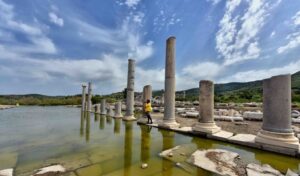Patara is a captivating destination that offers a unique blend of history, culture, and natural beauty. With its stunning ruins, beautiful beaches, and rich archaeological heritage, it promises an unforgettable experience for those who venture to this ancient coastal gem in Turkey. Whether exploring the ancient city, relaxing on the beach, or enjoying the local cuisine, Patara will leave a lasting impression on your heart and soul. So pack your bags, embark on an adventure, and discover the wonders of Patara!
Patara Ancient City / Patara Beach Photos
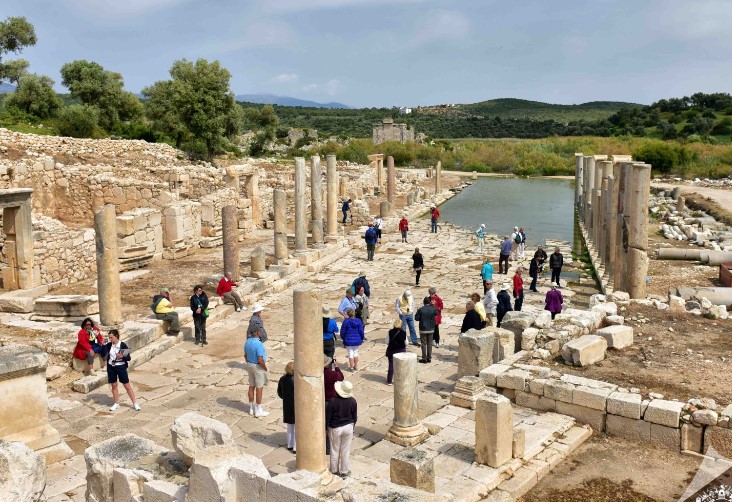
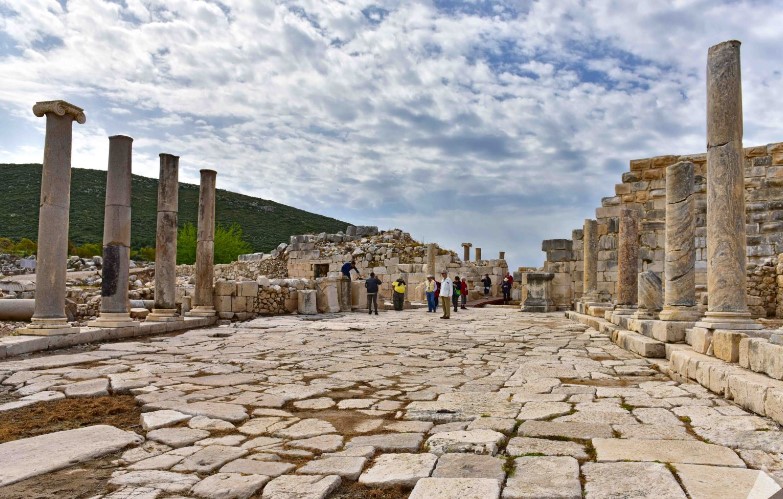
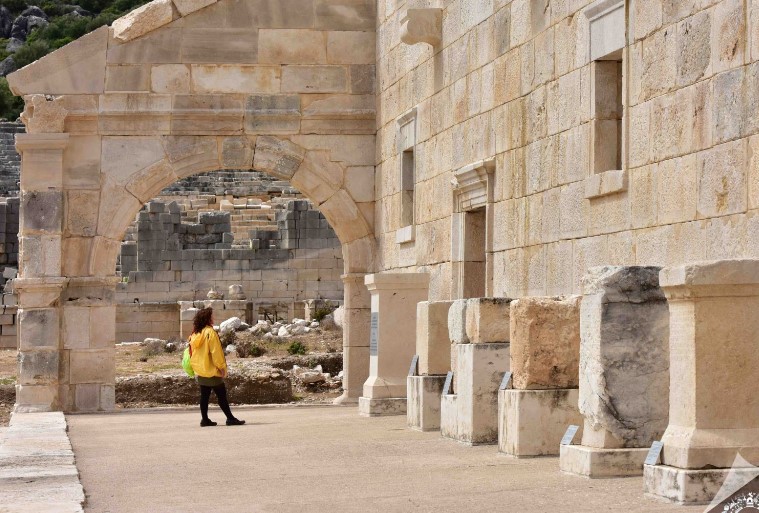
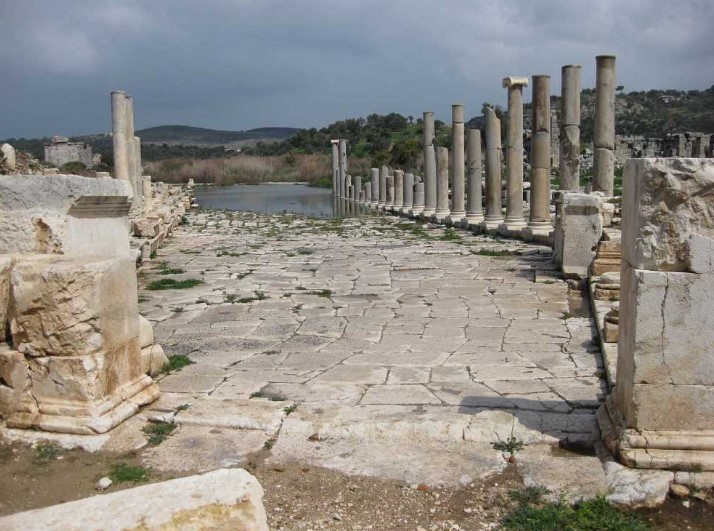
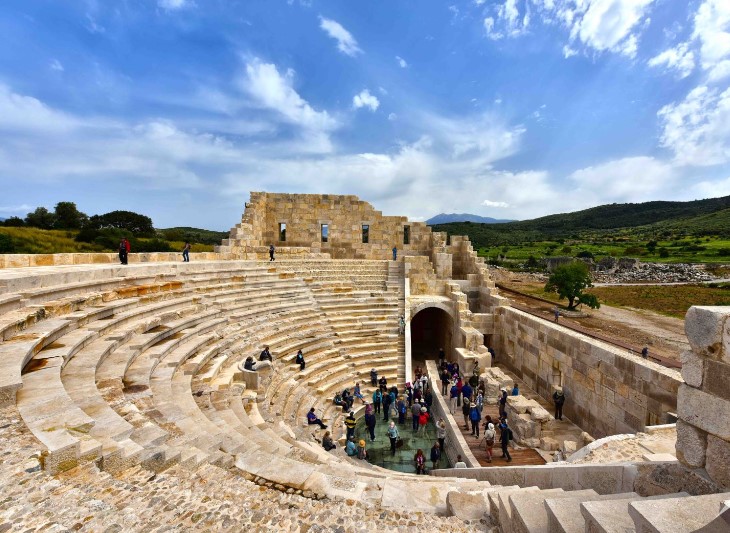
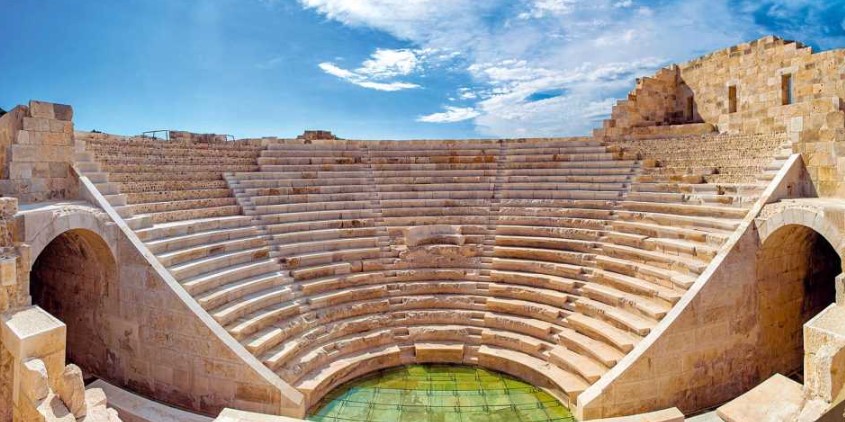
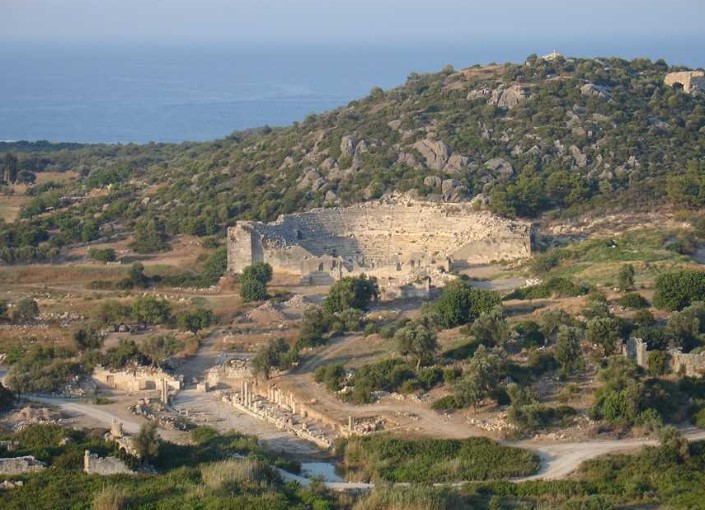
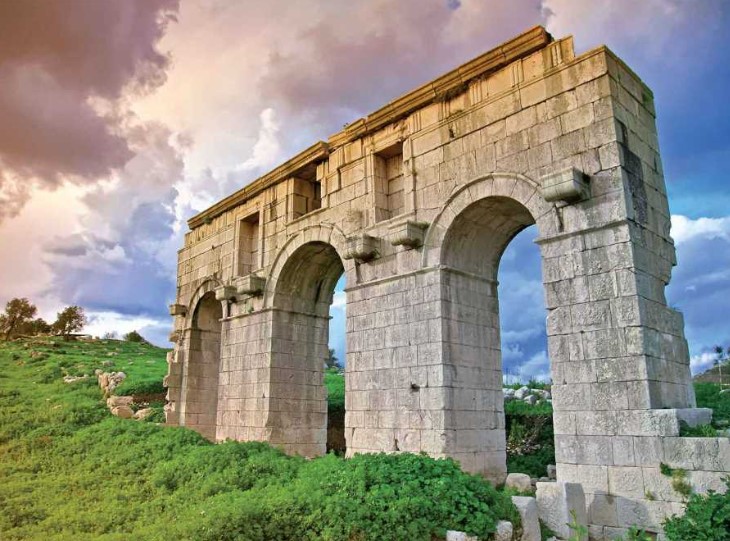
Index
Discovering Patara Turkey
Nestled along the stunning southwestern coast of Turkey, Patara is a remarkable destination that combines breathtaking natural beauty, rich history, and vibrant culture. Once a thriving port city of Lycia, Patara is renowned for its extensive archaeological ruins, beautiful sandy beaches, and the legendary birthplace of Saint Nicholas. Whether you’re a history enthusiast, a beach lover, or simply seeking a peaceful escape, Patara offers something for everyone.
Location and How to Get to Patara Turkey
Patara is located in the Antalya Province, specifically in the Kaş district. It lies approximately 10 kilometers from the popular town of Kaş and about 40 kilometers from Fethiye. The site boasts a prime location along the turquoise waters of the Mediterranean Sea, making it an ideal spot for both relaxation and exploration.
- By Air: The nearest major airport is Dalaman Airport (DLM), located about 100 kilometers from Patara. There are direct flights from various cities in Turkey and Europe. From the airport, you can rent a car, take a taxi, or use shuttle services to reach Patara.
- By Bus: Intercity buses run regularly to Fethiye and Kaş from major cities like Istanbul, Antalya, and İzmir. From Fethiye or Kaş, you can take a local dolmuş (shared minibus) to Patara.
- By Car: Renting a car allows you the freedom to explore the beautiful coastal roads at your own pace. The drive to Patara offers picturesque views of the Mediterranean and surrounding landscapes.
Legends and Meaning of the Patara
The name “Patara” is believed to derive from the Lycian word “patara,” which means “to fall” or “to flow.” This name is thought to refer to the nearby river that once flowed through the region. According to legend, Patara was founded by the hero Apollo, who was said to have established the city as a sanctuary for his worshippers.
Another intriguing legend surrounding Patara is that it is the birthplace of Saint Nicholas, known for his kindness and generosity. This connection adds a layer of cultural significance to the site, making it an important pilgrimage destination for many.
Highlights of the Patara Turkey
Patara is home to numerous highlights that showcase its historical and natural beauty:
- Patara Beach: Stretching for nearly 18 kilometers, Patara Beach is one of the longest and most beautiful beaches in Turkey. The soft, golden sands and crystal-clear waters make it a perfect spot for sunbathing and swimming.
- Ancient Ruins: The archaeological site of Patara features impressive ruins, including a well-preserved theater, a Roman bath, and the remains of ancient temples. The theater, with its stunning backdrop of the mountains, can seat around 5,000 spectators.
- The Lighthouse of Patara: Once considered one of the tallest lighthouses in the ancient world, the remains of the lighthouse can still be seen today, standing as a testament to the city’s maritime significance.
- The Acropolis: Located on a hill overlooking the city, the acropolis offers panoramic views of the surrounding landscape and the Mediterranean Sea. It is a great spot for photography and relaxation.
- The Necropolis: The ancient cemetery of Patara is dotted with sarcophagi and tombs, providing insight into the burial practices of the Lycians.
Why is it Worth a Visit to Patara Turkey?
Visiting Patara is a rewarding experience for several reasons:
- Rich History: The ancient city of Patara boasts a history that dates back thousands of years. Exploring the ruins allows visitors to connect with the past and understand the cultural heritage of the region.
- Stunning Natural Beauty: The combination of beautiful beaches, picturesque landscapes, and clear blue waters makes Patara a paradise for nature lovers and photographers.
- Fewer Tourists: Compared to other popular tourist destinations in Turkey, Patara remains relatively uncrowded, allowing visitors to enjoy a more intimate experience with the ancient ruins and natural surroundings.
- Cultural Significance: The connection to Saint Nicholas and the historical importance of Patara as a center of worship and trade add depth to your visit.
- Outdoor Activities: Patara offers a range of outdoor activities, including hiking, swimming, and exploring the nearby Lycian Way, a famous long-distance walking trail.
Best Time to Visit and Dress Code
The best time to visit Patara is during the spring (April to June) and autumn (September to November) months. During these seasons, the weather is mild, making it ideal for outdoor activities and exploration. Summer can be quite hot, especially in July and August, while winter may bring cooler temperatures and occasional rain.
While there is no strict dress code for visiting Patara, it’s advisable to dress comfortably and appropriately for outdoor activities:
- Beachwear: If you plan to swim or sunbathe, bring your swimsuit, beach towel, and sunscreen.
- Comfortable Clothing: Wear lightweight, breathable clothing suitable for walking and exploring the ancient ruins.
- Footwear: Sturdy sandals or walking shoes are recommended, especially if you plan to hike or walk on uneven terrain.
Entry Times and Fees
Patara is generally open to visitors year-round, but it’s advisable to check for any seasonal variations in opening hours:
- Summer (April to October): 8:00 AM to 8:00 PM
- Winter (November to March): 8:00 AM to 5:00 PM
As of the latest information, the entry fee for Patara is approximately 50 Turkish Lira (around $2.50). Prices may vary, so it’s best to check for updates before your visit. The fee typically includes access to the archaeological site and the beach.
Structure and Design of Patara Turkey
The architectural style of Patara reflects the influences of various civilizations that inhabited the region over the centuries. The layout of the ancient city includes a combination of Roman, Hellenistic, and Lycian designs.
1. The Theatre
The ancient theater of Patara is one of the most impressive structures in the city. Built in the 1st century AD, the theater features a semi-circular seating area, a well-preserved stage, and beautiful views of the surrounding hills. The seating capacity of around 5,000 spectators indicates the importance of entertainment and public gatherings in ancient Patara.
2. The Roman Bath
The remains of the Roman bath complex provide insight into the social and cultural practices of the inhabitants. The intricate heating system (hypocaust) is a testament to the advanced engineering techniques of the time. Visitors can explore the various rooms, including the caldarium (hot bath), tepidarium (warm bath), and frigidarium (cold bath).
3. The Nymphaeum
The Nymphaeum, a monumental fountain dedicated to the water nymphs, showcases exquisite carvings and sculptures. This structure highlights the importance of water in the daily lives of the inhabitants and serves as a stunning example of Roman architecture.
4. The Lighthouse
The remains of the ancient lighthouse of Patara are a significant archaeological feature. Once one of the tallest lighthouses in the ancient world, it guided sailors safely into the harbor. Its architectural style reflects the engineering prowess of the time.
5. The Acropolis
The acropolis of Patara is situated on a hill overlooking the city, providing panoramic views of the surrounding landscape. The remains of ancient fortifications and structures can still be seen, offering a glimpse into the city’s defensive strategies.
History of the Patara
The history of Patara is rich and complex, dating back to at least the 3rd millennium BC. The city was initially inhabited by the Lycians and later became an important center of trade and culture.
Ancient Settlement
Patara was known as a significant port city in the ancient Lycian League. Its strategic location along trade routes contributed to its prosperity and cultural exchange. The city was also a center for the worship of Apollo, with a temple dedicated to the god.
Hellenistic and Roman Periods
During the Hellenistic period, Patara flourished under the influence of the Roman Empire. The city became a vital administrative center and continued to thrive as a major port. The construction of impressive structures, including the theater, baths, and Nymphaeum, reflects the city’s importance during this time.
Byzantine Era
With the rise of Christianity, Patara became a significant center for the early Christian church. It is believed to be the birthplace of Saint Nicholas, who later became known as Santa Claus. The city continued to be an important religious site throughout the Byzantine period.
Decline and Abandonment
By the 7th century AD, Patara began to decline due to a combination of factors, including invasions and changes in trade routes. The city was eventually abandoned, and its ruins were left to the elements for centuries.
Modern Excavations
Excavations at Patara began in the 1980s and continue to this day. Archaeologists have uncovered numerous artifacts, structures, and inscriptions that provide valuable insights into the city’s history and culture. The ongoing excavations are revealing new discoveries that contribute to our understanding of this ancient site.
Patara Nearby Attractions
Patara is surrounded by several attractions that enhance your visit to the region:
1. Xanthos
The ancient city of Xanthos, a UNESCO World Heritage Site, is located about 20 kilometers from Patara. Known for its impressive ruins and historical significance, Xanthos features a theater, tombs, and the remains of the Lycian acropolis.
2. Letoon
Letoon, located near Xanthos, was an important religious center dedicated to the worship of Leto and her children, Apollo and Artemis. The site features well-preserved temples and inscriptions, making it a fascinating place to explore.
3. Kaş
The charming town of Kaş is about 10 kilometers from Patara and offers a vibrant atmosphere with its narrow streets, local shops, and seaside restaurants. Kaş is also known for its excellent diving opportunities and beautiful beaches.
4. Saklıkent Gorge
Saklıkent Gorge, located about 40 kilometers from Patara, is a stunning natural wonder. Visitors can hike through the gorge, swim in the cool waters, and enjoy the breathtaking scenery of the surrounding mountains.
5. Fethiye
The coastal town of Fethiye, approximately 40 kilometers from Patara, is known for its stunning harbor, beautiful beaches, and historical sites. Visitors can explore the ancient Lycian rock tombs, take a boat tour to the 12 Islands, or relax on Ölüdeniz Beach.
Interesting Facts About the Site
- Cultural Heritage: Patara is part of the ancient Lycian League, one of the earliest democracies in the world, which consisted of a federation of city-states.
- Birthplace of Saint Nicholas: Patara is believed to be the birthplace of Saint Nicholas, known for his acts of kindness and generosity, which inspired the modern figure of Santa Claus.
- Longest Beach: Patara Beach is one of the longest beaches in Turkey, stretching for nearly 18 kilometers. It is also a protected area due to its importance as a nesting site for loggerhead turtles.
- Ongoing Excavations: Archaeological excavations in Patara are ongoing, providing new insights into the city’s history and uncovering treasures from the past.
- UNESCO World Heritage Site Candidate: Patara’s rich history and archaeological significance have led to its nomination as a UNESCO World Heritage Site, highlighting its global importance.
Tips for Visitors
- Plan Ahead: Research and plan your visit in advance to make the most of your time in Patara. Consider hiring a local guide for a more enriching experience.
- Stay Hydrated: Bring water and snacks, especially if you plan to explore the archaeological site and the beach for an extended period.
- Respect the Site: As an archaeological site, it’s essential to respect the ruins and follow any guidelines provided by site management to help preserve the history for future generations.
- Explore Early: To avoid crowds, consider visiting the archaeological site early in the morning or later in the afternoon.
- Enjoy Local Cuisine: Don’t miss the opportunity to sample delicious local dishes at nearby restaurants, including fresh seafood and traditional Turkish kebabs.
Is the Museum Pass Valid?
As of now, the Museum Pass (Müze Kart) is not valid for entry to Patara specifically. However, if you plan to visit multiple archaeological sites and museums in Turkey, the pass can be a worthwhile investment for other locations.
Frequently Asked Questions
1. What is the best time to visit Patara?
The best time to visit is during the spring (April to June) and autumn (September to November) when the weather is mild and perfect for outdoor activities.
2. How do I get to Patara from Fethiye?
You can take a local dolmuş (shared minibus) from Fethiye to Patara, which takes about 30-40 minutes. Alternatively, you can rent a car or take a taxi.
3. Is Patara Beach suitable for families?
Yes, Patara Beach is family-friendly, with soft sand and shallow waters, making it an excellent spot for families with children.
4. Are there facilities available at Patara Beach?
Yes, there are some facilities at Patara Beach, including showers and beach umbrellas. However, it’s advisable to bring your own food and drinks, as there are limited options nearby.
5. How much does it cost to enter the archaeological site of Patara?
The entry fee for Patara is approximately 50 Turkish Lira (around $2.50), but it’s best to check for the latest information before visiting.

